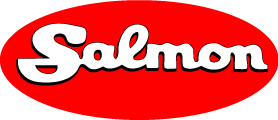If you have a forced air furnace that is more than 30 years old, chances are that it has a belt driven fan. There is a large fan that is joined to an electric motor with a fan belt, much like you would see in a car.
Many modern high efficiency gas furnaces use a direct drive fan with an ECM (Electronically Commutated Motor). These motors use a fraction of the electricity needed to power an older belt drive system. Many new furnaces also have variable speeds for the furnace fan. This also saves energy because your fan runs slower when it's not as cold outside and you do not require as much heat.
Modern homes also rely on the furnace fan to move cool air produced by your air conditioner, in the summer months. Modern ECM's will move more air, more efficiently, which leads to improved air conditioner performance.
Older belt drive, chimney vented furnaces are only about 60% efficient. Many new high efficiency furnaces will be 95% efficient or greater. There's a big saving on your gas bill. The ECM also creates a big saving on your hydro bill.
In addition to the energy savings, you'll experience a big improvement in home comfort. Many people are surprised when their new furnace actually keeps them more comfortable during the cooling season. This is especially true in two storey homes. The upper floor will always be warmer than the lower floor in the summer months. A new furnace will move more air, doing a better job of balancing the temperature of your home. In addition, with the ECM motor, if you decide to run your fan continuously to help minimize the temperate difference between the floors in your home the cost for the hydro to run the fan will be significantly less ( up to 80% less).
What are the Energy Savings?
This varies depending on the age and size of your home. We can tell you for sure that if you have an older chimney vented furnace with a belt drive fan, a new furnace will pay for itself.
It costs nothing to have Salmon Plumbing & Heating come out to your home and access your home comfort system. We have financing programs in place so you can purchase your new equipment with low monthly payments. Your energy savings will offset some or all of these payments, depending on the age of your current furnace.
A new furnace can pay for itself. Click here to see our website page.










